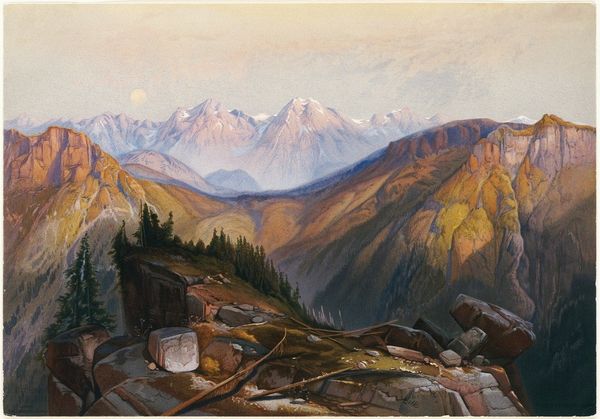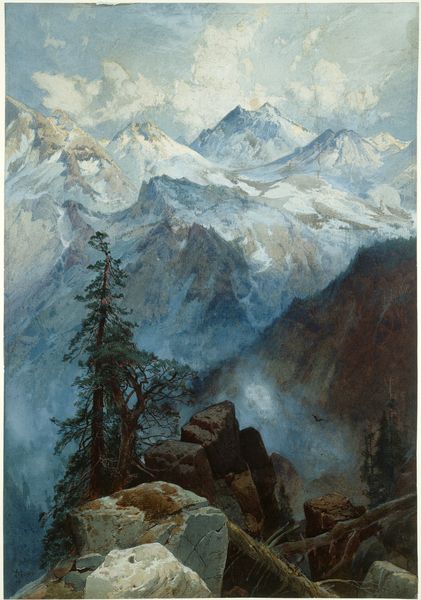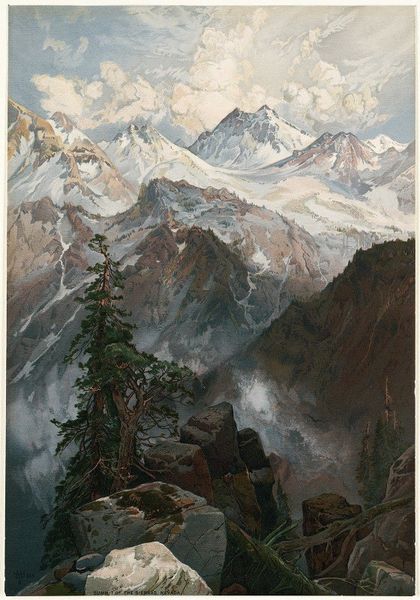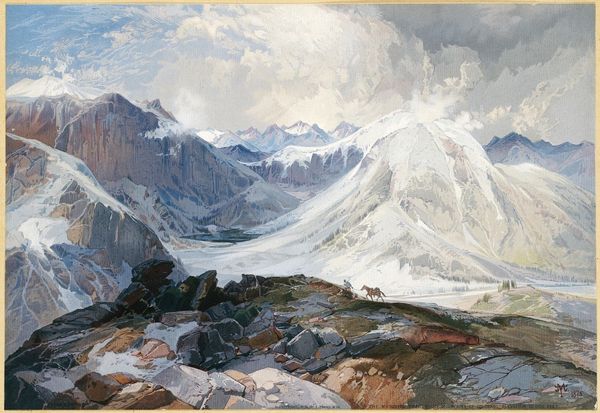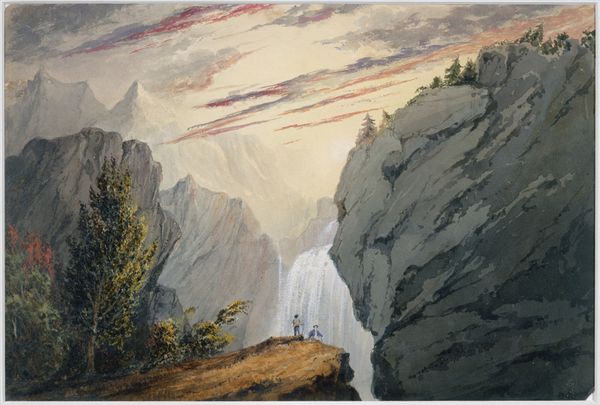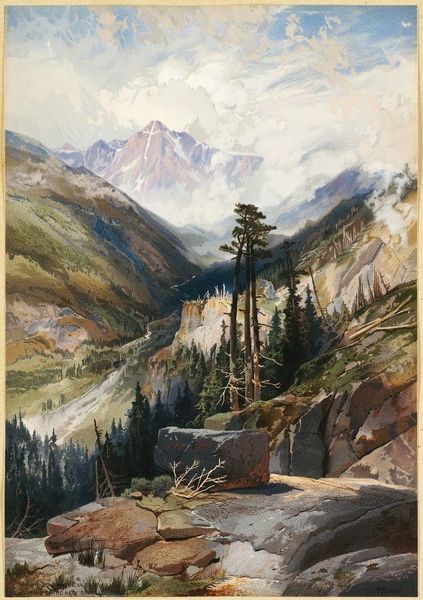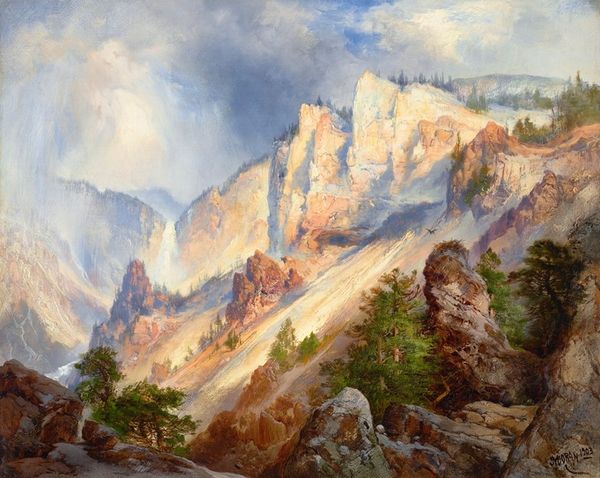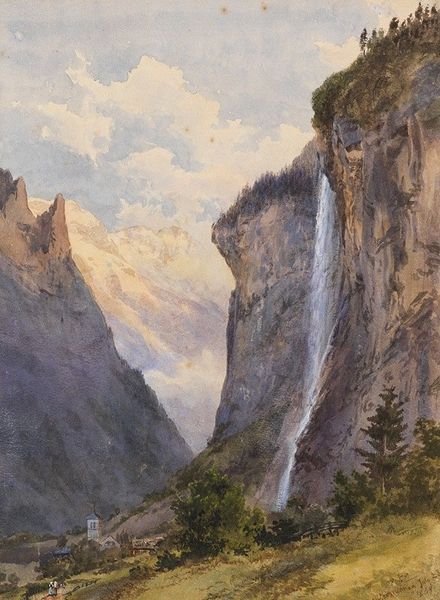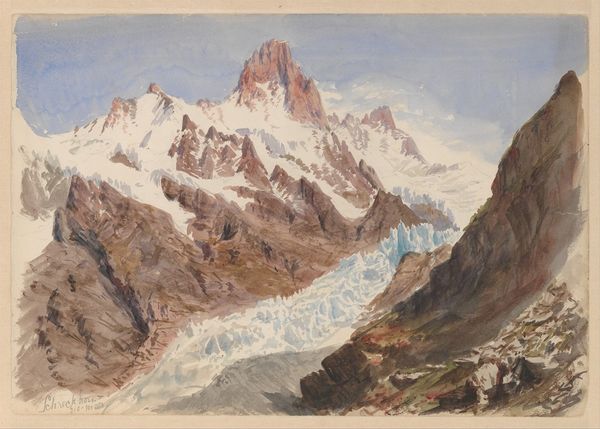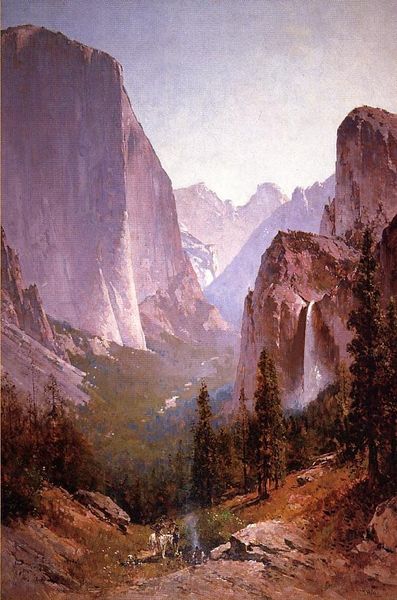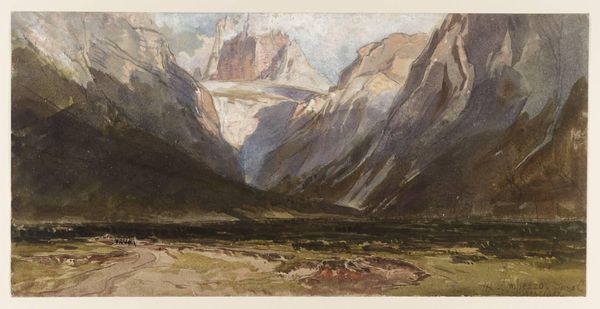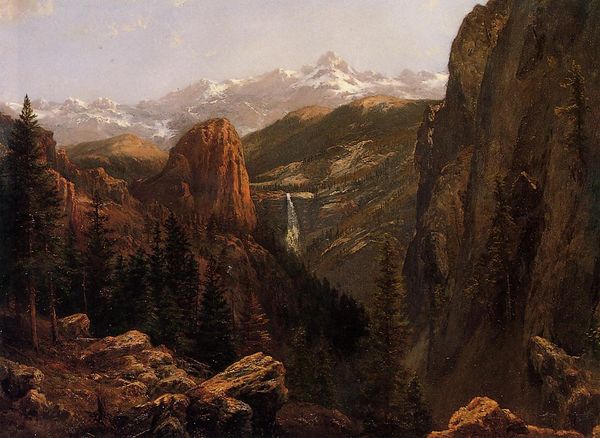
Copyright: Public Domain: Artvee
Editor: Here we have Thomas Moran's "Tower Falls and Sulphur Mountain, Yellowstone," painted around 1875. It's such a classic landscape piece, and the scale is so impressive. It almost feels staged somehow, like the romantic idea of nature instead of nature itself. What's your read on this, considering its historical context? Curator: Well, you've touched on a key point already. These paintings were powerful tools in shaping public perception and, more significantly, policy. Moran's work, and others from the Hudson River School, played a crucial role in the establishment of Yellowstone as a national park. It wasn’t just about aesthetics, but about convincing people, including Congress, of the value of preserving this wilderness. Editor: So, these weren’t just pretty pictures; they were persuasive arguments? Curator: Precisely! Think about who controlled access to these landscapes. How did the average citizen experience such grandeur if not through these curated, digestible depictions? The sublime was brought to the masses, fueling a sense of national pride and ownership, all carefully managed, of course. Who do you think got left out of that narrative? Editor: Indigenous populations, obviously. They’re completely absent. And I guess also, like, poorer people who wouldn't have had the luxury to enjoy these spaces even after the park was established. Curator: Exactly. The very idea of "wilderness" is a loaded term. What’s wild to some is home to others. Moran's painting presents a selective vision. A constructed ideal used to bolster a particular cultural and political agenda. Do you see any inherent paradox in protecting this vast landscape? Editor: It is quite a paradox that, even in preserving the wilderness, there's still a political agenda pushing the art in the first place. I always thought of these paintings as straightforward celebrations of nature. It’s interesting to consider how deliberately they were designed to serve specific purposes. Curator: Indeed. Art doesn’t exist in a vacuum, and especially art on this scale, influencing policy.
Comments
No comments
Be the first to comment and join the conversation on the ultimate creative platform.
